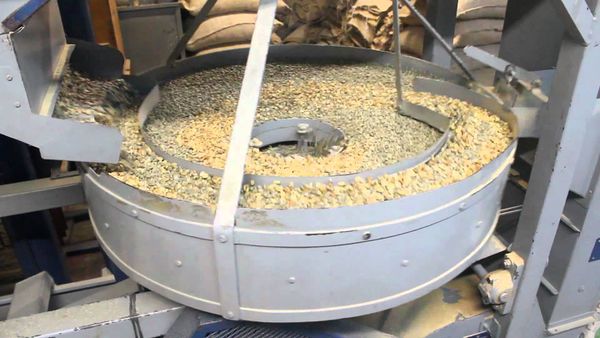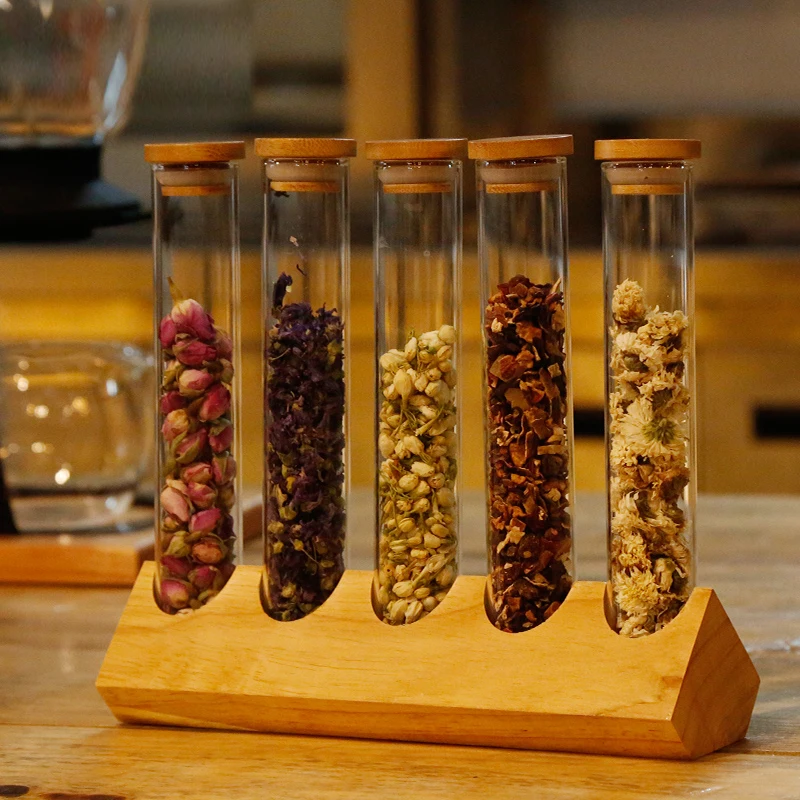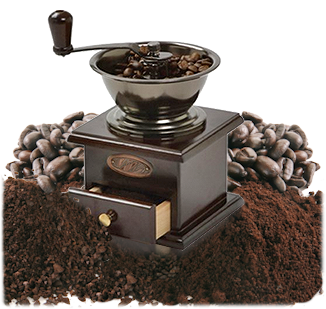In my previous blog I shared
about the journey from a coffee lover to Pasal
Coffee Ko. So, I thought to share about how coffee from ground is served in
cup. There is a long process which I’m going to share with you today. (Espresso=Coffee)
Know everything about coffee
#1 Planting

A coffee bean is really a seed.
Whenever dried, broiled and ground, it's utilized to mix espresso. On the off
chance that the seed isn't handled, it very well may be planted and develop
into an espresso tree.
Espresso seeds are commonly
planted in enormous beds in concealed nurseries. The seedlings will be watered
as often as possible and concealed from splendid daylight until they are
generous enough to be for all time planted. Planting regularly happens during
the wet season, so the dirt stays soggy while the roots become solidly settled.
#2 Harvesting the Cherries
Depending upon the variety, it will take around 3 to 4 years for the recently planted espresso trees to endure natural product. The organic product, called the espresso cherry, turns a splendid, dark red when it is ready and prepared to be reaped. There is regularly one noteworthy reap a year. In nations like Colombia, where there are two flowerings every year, there is a principle and auxiliary harvest.
In many nations, the crop is
picked by hand in a labor-intensive and difficult process, however in spots
like Brazil where the scene is moderately level and the espresso fields
gigantic, the procedure has been automated. Regardless of whether by hand or by
machine, all espresso is gathered in one of two different ways:
Strip Picked: All of the fruits are peeled off of the branch at
once, either by machine or by hand.
Specifically Picked: Only the ready fruits are collected, and they
are picked independently by hand. Pickers turn among the trees each eight to 10
days, picking just the fruits which are at the pinnacle of readiness. Since
this sort of collect is work serious and all the more expensive, it is utilized
fundamentally to gather the better Arabica beans.
Decent picker midpoints roughly
100 to 200 pounds of espresso fruits a day, which will create 20 to 40 pounds
of espresso beans. Every laborer's day by day take is deliberately gauged, and
every picker is paid on the value of their work. The day's gather is then moved
to the preparing plant.
#3 Processing the Cherries
When the coffee has been picked, preparing must start as fast as conceivable to counteract organic product deterioration. Contingent upon area and neighborhood assets, espresso is prepared in one of two different ways:
The Dry Method is the well-established
strategy for preparing espresso, and still utilized in numerous nations where
water assets are constrained. The newly chosen are basically spread on gigantic
surfaces to dry in the sun. So as to keep the fruits from ruining, they are
raked and turned for the duration of the day, at that point secured around
evening time or during precipitation to keep them from getting wet. Contingent
upon the climate, this procedure may proceed for half a month for each bunch of
espresso until the dampness substance of the fruits drops to 11%.
The Wet Method expels the mash
from the espresso cherry in the wake of collecting so the bean is dried with
just the material skin left on. In the first place, the newly collected fruits
are gone through a pulping machine to isolate the skin and mash from the bean.
At that point the beans are
isolated by weight as they go through water channels. The lighter beans buoy to
the top, while the heavier ready beans sink to the base. They are gone through
a progression of pivoting drums which separate them by size.
After partition, the beans are
shipped to enormous, water-filled aging tanks. Contingent upon a blend of
variables -, for example, the state of the beans, the atmosphere and the height
- they will stay in these tanks for somewhere in the range of 12 to 48 hours to
expel the smooth layer of adhesive (called the parenchyma) that is as yet
connected to the material. While resting in the tanks, normally happening
chemicals will make this layer break down.
At the point when aging is
finished, the beans feel unpleasant to the touch. The beans are flushed by
adhering to extra water procedures, and are prepared for drying.
#4 Drying the Beans

If the beans have been processed
handled by the wet technique, the pulped and aged beans should now be dried to
roughly 11% dampness to appropriately set them up for capacity.
These beans, still inside the
material envelope (the endocarp), can be sun-dried by spreading them on drying
tables or floors, where they are turned routinely, or they can be machine-dried
in huge tumblers. The dried beans are known as material espresso, and are
warehoused in jute or sisal packs until they are prepared for fare.
#5 Milling the Beans

Before being exported, material coffee is prepared in the accompanying way:
Hulling apparatus expels the
material layer (endocarp) from wet prepared espresso. Hulling dry handled
espresso alludes to expelling the whole dried husk — the exocarp, mesocarp and
endocarp — of the dried fruits.
Cleaning is a discretionary
procedure where any silver skin that remaining parts on the beans in the wake
of hulling is expelled by machine. While cleaned beans are viewed as better
than unpolished ones, actually, there is little contrast between the two.
Evaluating and Sorting is
finished by size and weight, and beans are additionally checked on for shading
blemishes or different defects.
Beans are measured by being gone
through a progression of screens. They are additionally arranged pneumatically
by utilizing an air stream to isolate substantial from light beans.
Regularly, the bean size is
spoken to on a size of 10 to 20. The number speaks to the size of a round
opening's measurement as far as 1/64's of an inch. A number 10 bean would be
the estimated size of a gap in a distance across of 10/64 of an inch, and a number
15 bean, 15/64 of an inch.
At long last, deficient beans are
evacuated either by hand or by apparatus. Beans that are unsuitable because of
lacks (inadmissible size or shading, over-matured beans, bug harmed, unhulled)
are expelled. In numerous nations, this procedure is done both by machine and
by hand, guaranteeing that lone the best quality espresso beans are traded.
#6 Exporting the Beans

The processed beans, presently alluded to as green espresso, are stacked onto delivers in either jute or sisal sacks stacked in delivery holders, or mass transported inside plastic-lined compartments.
World coffee creation for 2015/16
is conjecture to be 152.7 million 60-kg sacks, per information from the USDA
Foreign Agriculture Service.
#7 Tasting the Coffee


Coffee is more than once tried
for quality and taste. This procedure is alluded to as measuring and for the
most part happens in a room explicitly intended to encourage the procedure.
In the first place, the tester —
for the most part called the cupper — assesses the beans for their in general
visual quality. The beans are then simmered in a little research facility
roaster, quickly ground and mixed in bubbling water with cautiously controlled
temperature. The cupper noses the mix to encounter its smell, a fundamental
advance in making a decision about the espresso's quality.
In the wake of giving the
espresso a chance to rest for a few minutes, the cupper breaks the outside by
pushing aside the grounds at the highest point of the cup. Once more, the
espresso is nosed before the tasting starts.
To taste the espresso, the cupper
guzzles a spoonful with a fast inward breath. The goal is to shower the
espresso uniformly over the cupper's taste buds, and after that gauge it on the
tongue before letting it out.
Tests from an assortment of
bunches and various beans are tasted every day. Espressos not just investigated
to decide their attributes and defects, yet in addition to mix various beans or
making the best possible dish. A specialist cupper can taste many examples of
espresso daily and still taste the unpretentious contrasts between them.
#8 Roasting the Coffee

Roasting changes green coffee into the fragrant darker beans that we buy in our preferred stores or bistros. Most cooking machines keep up a temperature of around 550 degrees Fahrenheit. The beans are continued moving all through the whole procedure to shield them from consuming.When they arrive at an interior temperature of around 400 degrees Fahrenheit, they start to turn dark colored and the caffeol, a fragrant oil bolted inside the beans, starts to rise. This procedure called pyrolysis is at the core of broiling — it delivers the flavor and fragrance of the espresso we drink.
Subsequent to simmering, the
beans are promptly cooled either via air or water. Simmering is for the most
part performed in the bringing in nations on the grounds that naturally broiled
beans must arrive at the purchaser as fast as would be prudent.
#9 Grinding Coffee

The target of an appropriate granulate is to get the most flavor in some espresso. How coarse or fine the coffee is ground relies upon the preparing technique.The time frame the grounds will be in contact with water decides the perfect evaluation of granulate generally, the better the pound, the more rapidly the espresso ought to be readied. That is the reason espresso ground for a coffee machine is a lot better than espresso fermented in a dribble framework.
Coffee machines utilize 132
pounds for every square inch of strain to remove espresso.
It is prescribe pausing for a
minute to inspect the beans and smell their fragrance — truth be told, the
aroma of espresso alone has been appeared to effect sly affect the cerebrum.
#10 Brewing Coffee


(https://www.ncausa.org/About-Coffee/How-to-Brew-Coffee
follow this link to know how coffee is brewed in details.)
source:;
http://www.ncausa.org/about-coffee/10-steps-from-seed-to-cup
Image= goole.com


Comments
Post a Comment